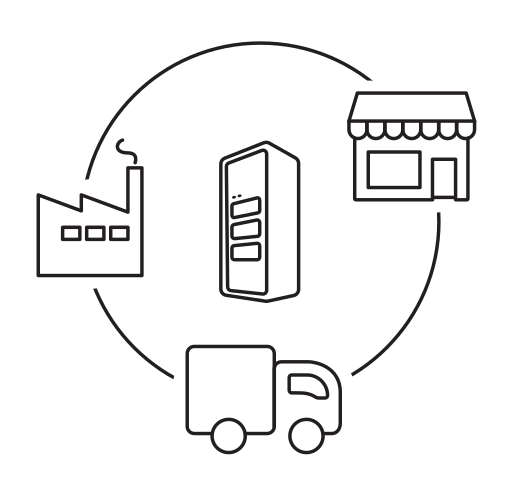
ERP Integrates Processes Across Business Functions
ERP is an acronym for Enterprise Resource Planning Hub, but even its full name doesn’t shed much light on what ERP is or what it does. For that, you need to take a step back and think about all of the various processes that are essential to running a business, including inventory and order management, accounting, human resources, customer relationship management (CRM), and beyond. At its most basic level, ERP software integrates these various functions into one complete system to streamline processes and information across the entire organization.
The central feature of all ERP systems is a shared database that supports multiple functions used by different business units. In practice, this means that employees in different divisions—for example, accounting and sales—can rely on the same information for their specific needs. Accelerate Business Performance using NetSuite Cloud ERP.
ERP Synchronizes Reporting and Automation
ERP software also offers some degree of synchronized reporting and automation. Instead of forcing employees to maintain separate databases and spreadsheets that have to be manually merged to generate reports, some ERP solutions allow staff to pull reports from one system. For instance, with sales orders automatically flowing into the financial system without any manual re-keying, the order management department can process orders more quickly and accurately, and the finance department can close the books faster. Other common ERP features include a portal or dashboard to enable employees to quickly understand the business’ performance on key metrics.
A Brief History of ERP
The term ERP was coined in 1990 by Gartner1, but its roots date to the 1960s. Back then, the concept applied to inventory management and control in the manufacturing sector. Software engineers created programs to monitor inventory, reconcile balances, and report on status. By the 1970s, this had evolved into Material Requirements Planning (MRP) systems for scheduling production processes.
In the 1980s, MRP grew to encompass more manufacturing processes, prompting many to call it MRP-II or Manufacturing Resource Planning. By 1990, these systems had expanded beyond inventory control and other operational processes to other back-office functions like accounting and human resources, setting the stage for ERP as we’ve come to know it.
Today, ERP has expanded to encompass business intelligence (BI) while also handling “front-office” functions such as sales force automation (SFA), marketing automation and ecommerce. With these product advancements and the success stories coming out of these systems, companies in a broad range of industries—from wholesale distribution to ecommerce—use ERP solutions.

Moreover, even though the “e” in ERP stands for “enterprise,” high-growth and mid-size companies are now rapidly adopting ERP systems. Software-as-a-Service (SaaS) solutions—also referred to as “cloud computing”—have helped fuel this growth. Cloud-based solutions not only make ERP software more affordable, they also make these systems easier to implement and manage. Perhaps even more importantly, cloud ERP enables real-time reporting and BI, making them even valuable to executives and staff seeking visibility into the business.
As a result, companies of all sizes and a wide range of industries are transitioning to cloud ERP systems. In fact, Forrester predicts that SaaS-based ERP adoption will rise 21 percent annually through 2015.2 When you stop to consider the benefits of ERP, it’s easy to see why it’s become so popular and why its use will continue to grow so rapidly.
The Business Value of ERP
At its core, ERP helps employees do their jobs more efficiently by breaking down barriers between business units. More specifically, an ERP solution:
Gives a global, real-time view of data that can enable companies to address concerns proactively and drive improvements.
Improves financial compliance with regulatory standards and reduces risk.
Automates core business operations such as lead-tocash, order-to-fulfillment, and procure-to-pay processes.
Enhances customer service by providing one source for billing and relationship tracking.

When you add up these advantages, the value of ERP—particularly cloud ERP—is clear. With an ERP solution, employees have access to accurate information that enables them to make better decisions faster. Not only that, but ERP software helps to eliminate redundant processes and systems, dramatically lowering the cost of doing business overall.